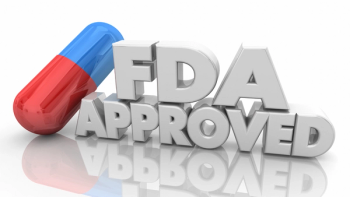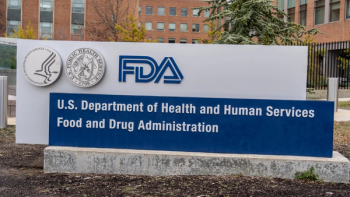Key Takeaways
- MFN Drug Pricing Raises Access and Implementation Concerns. While the most-favored nation pricing model aims to lower drug prices by aligning them with international benchmarks, Grosberg questions whether the savings will truly benefit patients at the pharmacy counter, citing concerns about PBMs and insurers absorbing the cost reductions.
- Regulatory Complexity and State-Level Fragmentation Loom. The interplay between federal directives like MFN and state initiatives such as Colorado’s Prescription Drug Affordability Board could create a fragmented pricing landscape, complicating compliance for manufacturers and price transparency for patients.
- Shift Toward Value-Based Medicaid Contracts is Accelerating. With federal Medicaid cuts anticipated, there’s a push to expand value-based contracting, supported by new executive orders and evolving tech such as generative AI to help measure patient outcomes—though challenges remain in commercial payer adoption.
I recently spoke with Michael Grosberg, vice president of product management at Model N, for Pharm Exec’s annual Pharma 50 report, seeking perspective and comment on the complex web of influencing forces on the policy front, including the Trump administration’s executive order reintroducing a most-favored nation (MFN) drug pricing model. The below Q&A captures Grosberg's expanded insights on such matters, starting with a deeper discussion of the implications—and unintended consequences—of MFN and other recent pricing-centric directives aimed at reducing prescription drug costs (on May 20, the Department of Health and Human Services released expectations for how drugmakers can cooperate with the MFN order).
Also from our conversation, Grosberg explores related tie-ins to looming pharmaceutical tariffs in the US and the push toward more value-based contracting in Medicaid amid substantial funding cuts likely nearing.
Grosberg joined Model N as part of the acquisition of Deloitte’s Pricing and Contracting Solutions business in 2021. He leads a team focused on regulatory compliance, revenue optimization, and analytics for biopharma manufacturers.
Pharm Exec: What was your big takeaway from the MFN order initially, and its potential to reduce drug costs at the patient level?
Grosberg: Whether or not pharmaceutical manufacturers will actually lower prices, what concerns me about this executive order the most is that I am not convinced this is going to reach the patients. At the end of the day, the thing I care most about is the price that patients pay at the pharmacy counter, because that speaks directly to affordability and directly to adherence and being able to continue to take the medication you need. So, if pharmaceutical manufacturers lower the prices, will that only line the pockets of PBMs (pharmacy benefit managers) and insurance companies? Those are very obvious concerns.
Even if you think about a much smaller subset of the same mechanism. For example, the Inflation of Reduction Act created a pathway for Medicare to negotiate directly with pharmaceutical manufacturers. For 10 drugs, the prices have been negotiated, and for another 15, the prices are being negotiated now. The Trump administration enthusiastically supported this process established by the Biden administration, so there’s very nice continuity there.
But compliance with this process has been tremendously difficult. Manufacturers want to comply, but it requires CMS (Centers for Medicare & Medicaid Services) to establish mechanisms and systems and technologies to be able to deliver those discounts directly to patients at the pharmacy counter. CMS has been very slow to do this. The [MFN situation] is going to be much broader.
Pharm Exec: In regards to MFN, is there a clear incentive, at least in theory, for manufacturers to comply?
Grosberg: I think the more direct incentive is that, if enough manufacturers comply, it presumably will avoid rule-making by HHS, with the understanding or implication that if HHS were to go through rule-making procedures around this, it would be worse for the manufacturers than simply complying voluntarily. But it's purely speculation.
This first cut of this is establishing the benchmarks. I will say this: Drug pricing is not just one thing. It’s not like I go to the supermarket and buy a carton of orange juice. It’s a complex and interdependent ecosystem. These kinds of actions are fraught with unintended consequences.
Pharm Exec: Are there current pricing benchmarks or precedence in the US that MFN could conflict with?
Grosberg: One place that I am watching is Colorado’s Prescription Drug Affordability Board [established in 2021]. It's been litigated around and now they're on the precipice of setting the affordability price for one drug, for one manufacturer, for the state of Colorado. If there is a determination by HHS that there is a certain price that HHS thinks manufacturers should charge, that is going to feed into the logic and affordability determination by the Colorado Affordability Board. That price may be higher than what they thought it was going to be, or it may be lower.
Colorado is seen as a benchmark. If its drug affordability board is successful at enforcement, there are multiple other states who are poised to enact similar legislation or establish similar protocols. When that happens, the problem is going to multiply 50-fold, because then every state is going to be effectively setting their own drug prices. It could create tremendous difficulty. If there are state rules, it's going to become really difficult for patients to figure out what they owe.
Pharm Exec: Does that, then, lend itself to greater adoption of these emerging direct-to-patient digital pharmacy models that some Big Pharmas and others have established?
Grosberg: I worry about how long it will take to create the infrastructure for those. And I also worry about the fact that, even if we do end up in the most-favored nation framework, those prices are still unaffordable for a lot of people without insurance. Direct-to-consumer is nice for consumers who can afford those costs. But there are many consumers who cannot. Particularly Medicare and Medicaid.
In the broader pricing landscape, my recommendation to pharmaceutical manufacturers is, if you haven't already, start connecting with your global teams, start understanding where your prices are, and really consider that in the market access strategy—and also look at where your contracts are. Market access contracts can run anywhere between a year and five years. Should you be looking at longer-term market access contracts? Or is that less advantageous? Those are the kinds of questions manufacturers should be asking.
Pharm Exec: How do you view the concerns of PhRMA, BIO, and other groups that implementing MFN drug pricing would hamper therapeutic innovation?
Grosberg: That's obviously a concern. [In recent months,] several pharmaceutical executives have come out with calls for the European Union to voluntarily increase reimbursement for prescription drugs. Because they do see the shrinking investment from the US and the shrinking market in the US. They're saying that the R&D investment will be jeopardized.
As a policy matter, I continue to come back to what Model N stands for as we provide services to these life sciences companies. We are all focused on patient access—can patients get better access and consistent access to medicine? I have yet to see a direct pathway for that in this executive order.
Pharm Exec: Pivoting a bit but related, what impacts do you foresee pharmaceutical tariffs—if ultimately enacted in the US—having on manufacturer business strategies?
Grosberg: From my perspective and from the perspective of the manufacturers who are clients, tariffs were certainly going to have an impact on the bottom line, but it wasn't going to be that dramatic. At the end of the day, especially in the branded pharmaceutical and biologics space, the cost of raw materials is a relatively small component of the overall expense of creating a drug or even manufacturing it. There are, of course, manufacturers who import finished products, and they were going to be impacted. But manufacturers were already announcing investments in US manufacturing capacity.
We at Model N support not only pharma manufacturers, but also med device and med tech manufacturers. And many of those manufacturers reported that they already have signed significant US manufacturing capacity that they can ramp up. … Some manufacturers transferred a lot of material in anticipation of tariffs. I think that is certainly going to further delay the impact.
Also, from a patient perspective, the cost of raw materials probably has a two-year lag before the impact can be felt. With, for example, tariffs on cell phones or cars, that's an impact that a consumer is going to feel whenever you go in to buy. The car that was manufactured in Europe and shipped here, you're feeling the tariff right there on the dealer lot. With drugs, by the time the raw material makes it into the supply chain, what you pay is driven by your plan, whether it's Medicare, Medicaid, or your commercial plan. Those plans may have locked in their prices for one, two, or three years through market access contracts. So even in cases where tariffs would have resulted in price adjustments, we’re two or three years away from consumers feeling it.
Pharm Exec: In the more immediate, amid impending cuts in federal Medicaid funding, how do you see the push toward more value-based contracting for Rx advocated in the previous EO, in April, playing out?
Grosberg: Previously, it was up to state Medicaid programs to draft, create, and enter into value-based contracts with pharmaceutical manufacturers. There are a few examples out there, but it was not a common practice. I think that there will be a concerted effort by CMS to dictate and to create a much more structured framework. Entering into those value-based agreements are going to be much more common, and we are advising client manufacturers to prepare for a significant increase in the number of requests for value-based contracting by Medicaid programs.
Pharm Exec: What about their potential emergence in the commercial payer setting?
Grosberg: The challenge with value-based contracts is the mechanism to measure outcomes. Commercial payers don't have the same end-to-end control over there insured population as Medicaid does. So it's more difficult for commercial contracts to really articulate what a value will be and how you would measure it in order to enter it into those contracts. I see this being, first, Medicaid, based on the info in the executive order on the topic, and then we will see where it goes on the commercial scene.
I generally see manufacturers being open to these arrangements and I encourage manufacturers to be open to them; we have established technology and platforms to support companies to be able to do this. It's up to the parties to really negotiate those health outcomes that are meaningful and to create those commercial structures that are meaningful. I see there being more incentive to do so with the recent executive order.
There’s obviously issues around data volume and protecting the patient’s privacy and being HIPAA-compliant. It’s also being able to measure different kinds of outcomes. I think the advances in generative AI are going to help bolster that and enable us to be able to digest the patient clinical information and convert it to structured outcomes data. That’s probably a year or two away, but if this is coupled with regulatory action from CMS, it can really energize this space.





